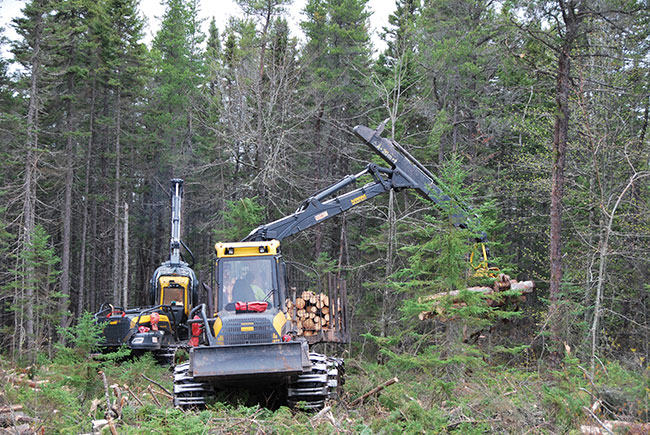
Features
Harvesting
How to increase insurance value while reducing insurance costs
February 10, 2021 By Chris Duncan
 Photo: Annex Business Media
Photo: Annex Business Media Insurance has been getting increasingly expensive across the forestry industry over the past two years. This has caused many business owners to question not only whether they’re getting value for their money, but also if continued price hikes will soon impact the viability of their business.
With the COVID-19 crisis and continued economic uncertainty, it’s also introduced the possibility many operators may forego critical business insurance to keep more cash on hand to cover revenue shortfalls. Though this, too, could result in unintended consequences in the event of a business interruption or loss.
Forestry professionals are facing frustration, challenges, and uncertainty right now. But your insurance questions don’t have to be an all-or-nothing proposition. In fact, many businesses across the sector may benefit from working with an insurance advisor to make sure their coverage meets their needs, fits their budget, and is providing the value they’re paying for.
Right size your insurance values
While insurance should be a given, buying too much coverage can be just as problematic as buying too little. You want to be insured for any likely losses, but you don’t want to overpay premiums you’re unlikely to collect on.
That’s why you should seek out an independent review of your insurance values at least once every few years. A qualified insurance advisor can quantify your potential claims and correlate these with common business risks within the forestry industry.
For example, at our firm, we use a probable loss scenario model which takes a variety of industry-specific factors into account to simulate a range of potential outcomes and visualize your worst-case, best-case, and most likely loss-related costs. Then you can choose values that fit your budget and your business continuity needs.
The right coverage
Similarly, many business owners fall into the trap of wanting to insure against every possible scenario. However, this can tie up valuable cashflow and often causes more harm than it prevents. Consequently, you should review your insurance coverage on an annual basis to make sure you’re covering areas that are at the greatest likelihood of a significant insurable loss, would see the greatest financial impacts from an insurable loss and provide the most coverage for the most competitive rates.
In many cases, this results in business owners reducing the total amount of coverage they’re paying for. It often increases their peace of mind, too, because they save money and have evidence-backed rationale for why they’re paying for the coverage they have.
It’s natural to feel some initial discomfort around removing insurance from areas of your business. Just remember, you’re willing to accept insurance as a financial hedge because there’s a better probability that it will pay out over the lifetime of your policy. On the flip side, there’s little value paying for anything that will cost you more than you’re likely to ever get out of it.
Minimize the likelihood of a potential claim
With all of this in mind, no business owner buys insurance coverage with the hope of some day having to use it. Even the best insurance can’t fully compensate the time and effort you put into rebuilding your operation, co-ordinating with insurers and business advisors, or the mental and emotional toll a crisis can take on you and your team.
A strong business resilience plan is truly your best policy because it simultaneously reduces the likelihood of a business interruption and allows you to get back up and running faster if one occurs.
A good risk advisor will look at your business from all angles to understand how the various pieces connect, the potential impacts from loss events and where crises and losses are most likely to occur. They will also help you understand how potential crises and losses will impact your bottom line and your ability to operate.
At a minimum your business resilience strategy should support you to:
- Recognize the early warning signs of an impending crisis or loss
- Minimize the overall impacts of a crisis or loss
- Get back up and running faster after a crisis or loss
- Rapidly quantify your losses and submit a well-documented claim
Get comfortable with uncertainty
This year has demonstrated just how unpredictable the world can be. With continued concerns around climate change, geopolitical uncertainty and more, it’s likely to get even more unpredictable.
Insurance coverage can’t protect you against every possible loss or business interruption. But the right insurance framework can increase the likelihood you’ll get back on your feet and back to business when the most probable events happen.
You don’t have to live in fear. And you shouldn’t commit more resources than necessary to your risk management framework. We believe many operators across the forestry industry could benefit from re-evaluating what they’re insuring, how much they’re insuring, and additional steps they can take to reduce their dependence on insurers alone. Beyond reducing your costs and exposure to potential losses, this may be the tipping point needed to bring industry insurance prices back in balance.
To learn more about how MNP can help your business, contact Craig Burkart, national leader insurance advisory, at craig.burkart@mnp.ca or Chris Duncan, national leader – forestry and forest products, at chris.duncan@mnp.ca.
Print this page